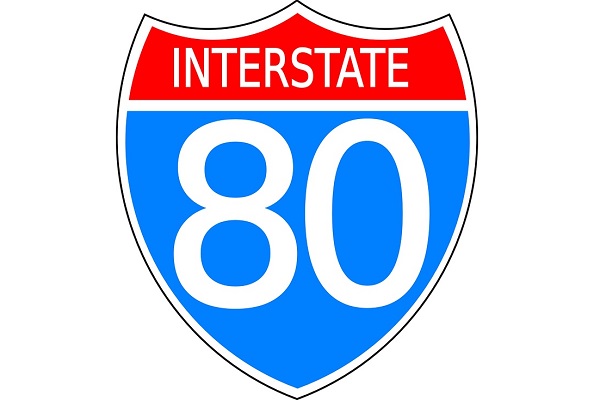AUGUST 5, 2020 – While the rest of the world battled its way through another two days, my wife and I drove from Hamburg, Connecticut to Falcon Heights, Minnesota—1,345 miles, minus the mile to and from the highway and our overnight hotel. Total drive time: 21.5 hours inside total elapsed time of 45 hours. Such a drive allows time to think about . . . the highway.
I knew that the Interstate Highway System had been created during the Eisenhower Administration; that odd-numbered routes run east-west and even-numbered, north-south; that I-94 through St. Paul had destroyed the African-American “Rondo” neighborhood. I’d read somewhere that Eisenhower’s inspiration for the Interstate had been Germany’s Autobahn, which, in turn, had been the brainchild of our favorite villain, Adolf Hitler. Beyond these few details, I knew very little about one of the more prominent displays of good ol‘ American . . . socialism at its central planning best.
Three generations later, ardent conservationists, at least, might say, “socialism at its central planning worst.” It marginalized rural areas beyond reach of the nation’s primary commercial arterial system; it enabled suburban sprawl; it ensured our obsession with the automobile—the ultimate vehicle of individual freedom.
On the positive side, however, America’s Monument to Socialism is the sine qua non of our economic prosperity: The Interstate is to commerce what arteries are to the human body. (During portions of the trip, I pretended our car was Miss Frizzle’s Magic School Bus riding through a human artery and that the semis traveling all around us were hemoglobin molecules loaded with oxygen.)
As I conducted non-scientific surveys of traffic—the ratio of semi-trailer/tractor trucks to automobiles, for example (in most stretches, the truck count seemed to match or exceed automobile traffic)—and glanced at the design of specialized rigs and accessories, I found myself pondering the bigger picture—the macro economy. Each truck hauled “stuff” that was destined to become part of bigger “stuff” used to make a lot of other “stuff” OR the “stuff” being freighted was already finished “stuff” soon to be purchased and consumed by you or me. Behind the wheel of each truck was . . . a job. And each truck itself involved a gazillion components, numerous factories, more jobs, capital, organization, and regulation of size, weight, emissions, safety equipment, and driver hours behind the wheel. Then there’s taxation for maintenance of the highway system itself.
Speaking of maintenance . . . the many construction zones we encountered pulled my thoughts down more “rabbit holes.” Who masterminds the schedule, budgeting, bidding, procurement, safety, signage, and so on, ad infinitum? Who manages such details as the ordering, delivery, and placement of miles upon miles of temporary “jersey” barriers along miles-long construction corridors?
During a rest stop in beautiful Pennsylvania, I hopped on the Internet to research the Interstate. OMG! Studies galore; graphs, stats, and more! So much to learn . . . “But I have promises to keep and miles to go before I sleep, miles to go before I sleep.”
(Remember to subscribe to this blog and receive notifications of new posts by email.)
© 2020 by Eric Nilsson
